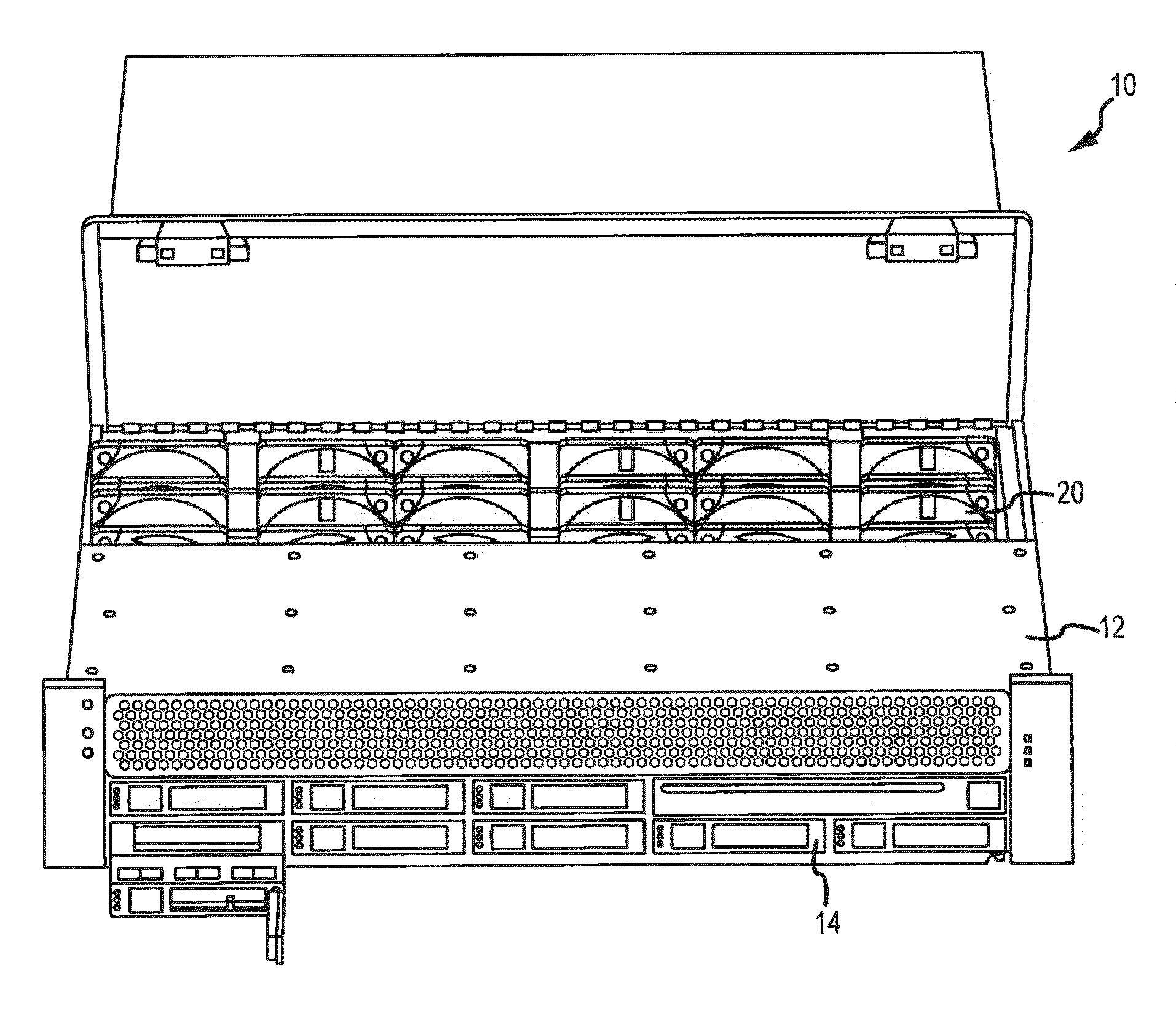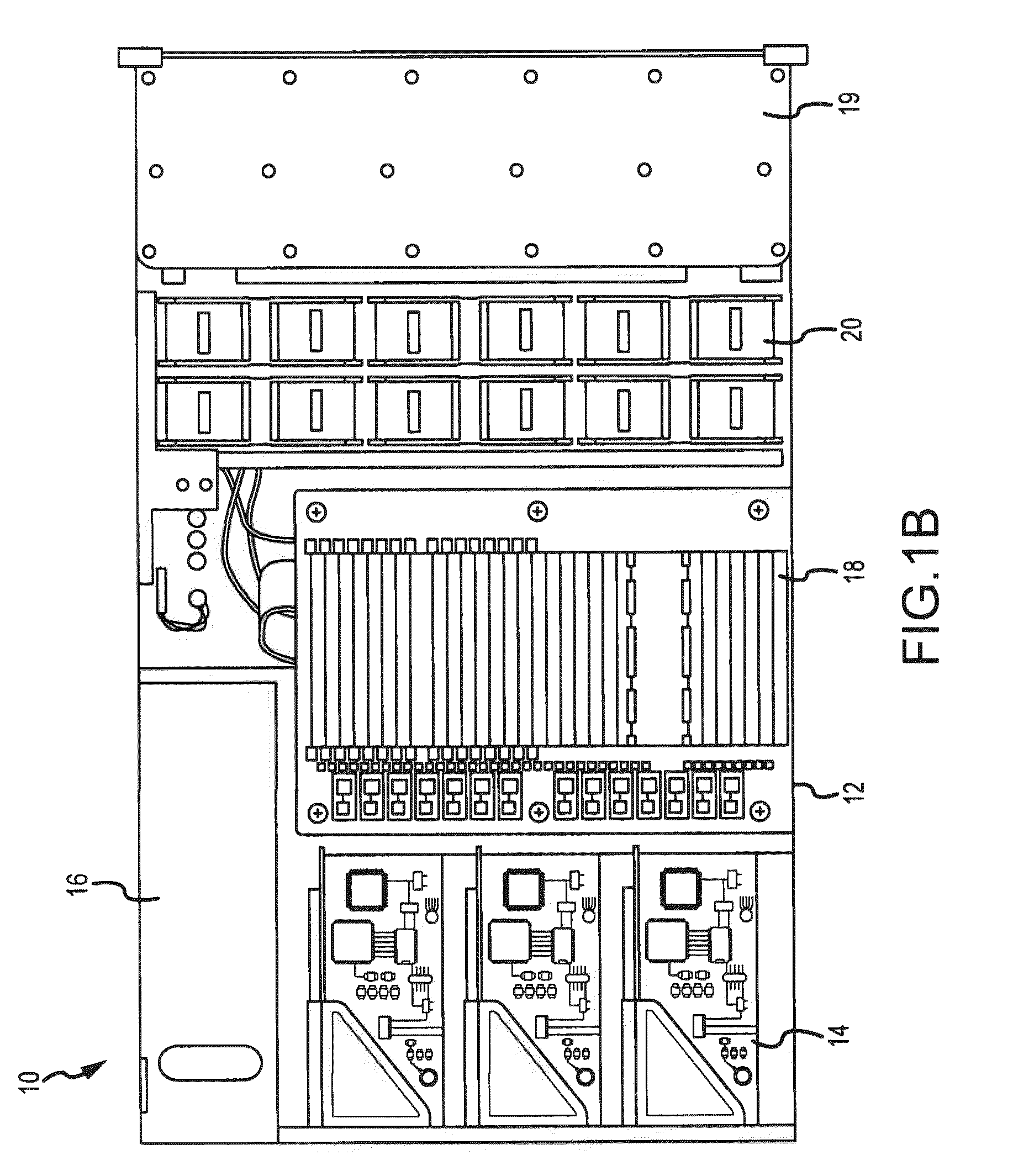System for minimizing mechanical and acoustical fan noise coupling
a technology of mechanical and acoustic fan and noise coupling, which is applied in the direction of dynamo-electric converter control, electric apparatus casing/cabinet/drawer, dynamo-electric converter control, etc., can solve the problems of beating frequency, functional component failure, and worse failure problems, so as to minimize mechanical and/or acoustic fan noise coupling, reduce attendant electromagnetic noise, and accelerate rotational speed
- Summary
- Abstract
- Description
- Claims
- Application Information
AI Technical Summary
Benefits of technology
Problems solved by technology
Method used
Image
Examples
Embodiment Construction
[0022]The inventors have recognized that employing higher numbers of more powerful cooling fans drives increasing levels of vibrational and acoustical noise. This noise tends to center around the constant blade-passing frequencies (FBP) of each fan, as well as harmonically related frequencies and beat frequencies caused by the interference of large-amplitude blade-passing frequencies (FBP) of different fans. Large amplitude mechanically coupled vibration leads to the functional failure of server components such as hard drives, PCI cards, and the like. In addition, high amplitude and strongly tonal acoustic noise presents perception challenges for customers and affects customer acceptance of server systems.
[0023]To address these and other issues, embodiments of the present invention are directed to a system and method for air-cooling an electronic device (e.g., a server system) including one or more heat-generating electrical components. The described cooling system and method decoup...
PUM
 Login to View More
Login to View More Abstract
Description
Claims
Application Information
 Login to View More
Login to View More - R&D
- Intellectual Property
- Life Sciences
- Materials
- Tech Scout
- Unparalleled Data Quality
- Higher Quality Content
- 60% Fewer Hallucinations
Browse by: Latest US Patents, China's latest patents, Technical Efficacy Thesaurus, Application Domain, Technology Topic, Popular Technical Reports.
© 2025 PatSnap. All rights reserved.Legal|Privacy policy|Modern Slavery Act Transparency Statement|Sitemap|About US| Contact US: help@patsnap.com



